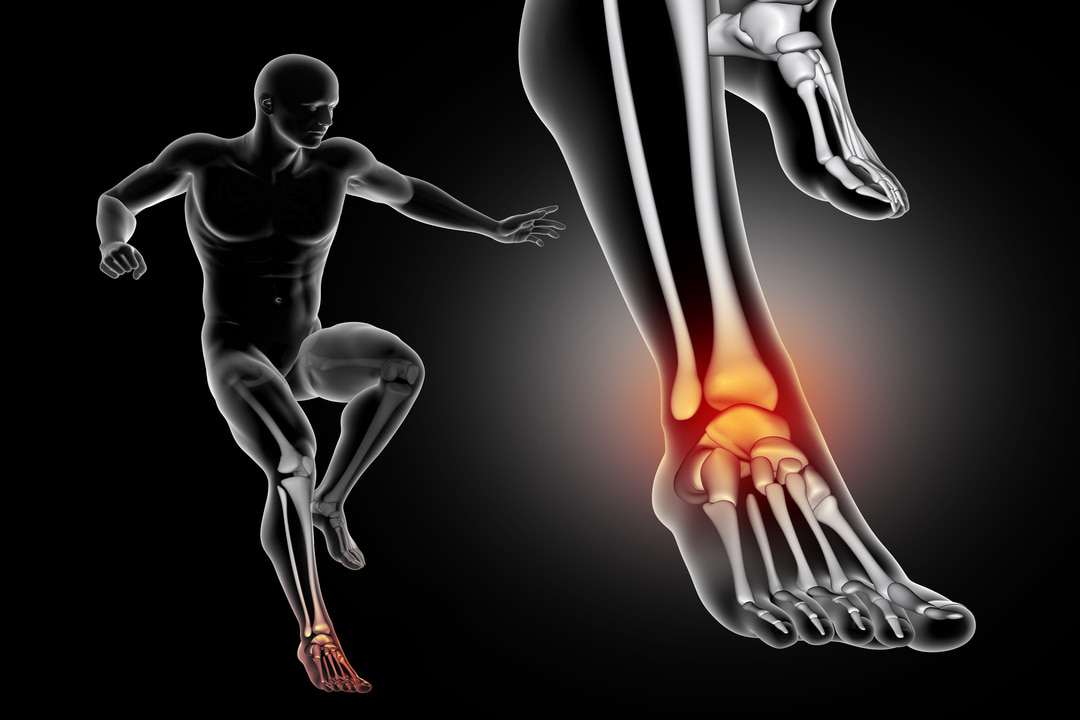Foot and ankle deformities are structural abnormalities that affect the alignment, function, or shape of the foot and ankle. These deformities can be congenital (present at birth) or acquired due to injury, arthritis, or other medical conditions. Such deformities may cause pain, discomfort, difficulty walking, and an overall decline in quality of life if left untreated. Understanding the causes and treatment options is vital for managing these issues and restoring mobility.
What Are Foot and Ankle Deformities?
Foot and ankle deformities refer to abnormal formations or misalignments in the bones, muscles, or tendons of the feet and ankles. Common deformities include flat feet, high arches, bunions, hammertoes, clubfoot, and equinovarus (a condition where the foot points downward and inward). These conditions can affect how a person walks, stands, or balances, often leading to additional joint problems in the knees, hips, and lower back.
In severe cases, ankle and foot deformities can cause significant pain and limited mobility, requiring medical intervention. Early diagnosis and treatment are essential to prevent further complications and improve quality of life.
What Causes Foot and Ankle Deformities?
The causes of foot and ankle deformities can vary widely, but they generally fall into two main categories: congenital and acquired.
Congenital deformities: These are present at birth and may result from genetic conditions, abnormal development in the womb, or complications during pregnancy. Examples include clubfoot or congenital flat feet. In these cases, early detection and intervention can often improve outcomes.
Acquired deformities: These develop over time due to external factors such as trauma, arthritis, obesity, or improper footwear. Injuries like fractures or sprains can lead to long-term deformities if not properly treated. Conditions like rheumatoid arthritis or osteoarthritis can also cause bones and joints to deteriorate, leading to misalignment.
Other contributing factors may include neuromuscular diseases, infections, or overuse injuries, which place additional stress on the foot and ankle structures.

How Are Foot and Ankle Deformities Treated?
Treatment for foot and ankle deformities depends on the severity of the condition and its underlying cause. A range of non-surgical and surgical options are available to correct deformities, alleviate pain, and restore mobility.
- Non-surgical treatments: These are usually the first line of treatment and may include orthotic devices, physical therapy, braces, and customized footwear. Anti-inflammatory medications or corticosteroid injections may also be prescribed to reduce pain and swelling. For mild deformities, these conservative methods can provide significant relief and prevent the condition from worsening.
- Surgical treatments: When non-surgical options fail, surgery may be necessary. Surgical procedures for ankle and foot deformities include tendon lengthening, joint fusion, bone realignment (osteotomy), or even total joint replacement. The type of surgery depends on the specific deformity, the patient’s age, and overall health.
Surgical intervention is often needed for severe or complex deformities that interfere with daily activities or cause chronic pain. Recovery from surgery can take several months, and patients typically require physical therapy to regain strength and mobility.
Treatment of Foot and Ankle Deformities in Turkey
Turkey has emerged as a leading destination for high-quality, affordable healthcare, including the treatment of foot and ankle deformities. The country’s well-developed healthcare infrastructure, experienced orthopedic surgeons, and advanced medical technologies attract patients from around the world. Treatment facilities in Turkey offer a wide range of services, from initial diagnosis to post-operative care, ensuring that patients receive comprehensive support throughout their recovery.
One of the key advantages of seeking treatment for ankle and foot deformities in Turkey is the cost-effectiveness. Compared to many Western countries, Turkey offers the same advanced treatments at a fraction of the price, making it an attractive option for medical tourists. Additionally, the country’s experienced healthcare professionals are skilled in addressing complex deformities, ensuring high success rates in treatment.
What Are the Stages of Treatment of Foot and Ankle Deformities?
The treatment process for foot and ankle deformities typically involves several stages, ensuring comprehensive care from diagnosis to recovery:
- Initial Assessment: The first step is a thorough evaluation by a specialist, which includes a physical examination, imaging tests (X-rays, MRI, or CT scans), and a detailed medical history review. This helps the doctor determine the type and severity of the deformity and the best course of action.
- Treatment Planning: Based on the assessment, the specialist will create a customized treatment plan. For mild deformities, non-surgical methods such as orthotics or physical therapy may be recommended. In more severe cases, surgery may be the best option.
- Pre-surgical Preparation: If surgery is required, the patient will undergo pre-surgical testing to ensure they are healthy enough for the procedure. This may include blood tests, heart monitoring, and consultations with other specialists if necessary.
- Surgery: The surgical procedure is performed in a hospital or specialized clinic by an experienced orthopedic surgeon. Depending on the complexity of the deformity, the surgery may last several hours.
- Post-surgical Care: After surgery, the patient will need to follow a strict rehabilitation plan, which may include rest, physical therapy, and gradual reintroduction of weight-bearing activities. Regular follow-up appointments are essential to monitor healing progress.
- Recovery and Rehabilitation: Full recovery can take several months, during which time patients may need to wear braces or use crutches. Physical therapy plays a crucial role in regaining strength, flexibility, and mobility.
For Whom Is the Treatment of Foot and Ankle Deformities Suitable?
The treatment of foot and ankle deformities is suitable for a wide range of individuals, from children born with congenital deformities to adults who develop issues over time. Candidates for treatment typically include:
Children: Early intervention is crucial for congenital deformities to ensure normal growth and development. In many cases, corrective treatment can prevent long-term complications.
Adults with acquired deformities: Individuals who develop deformities due to injury, arthritis, or other medical conditions can benefit from treatment. Early diagnosis and treatment can prevent the deformity from worsening and improve quality of life.
Elderly patients: Older individuals with deformities resulting from arthritis or other degenerative conditions can also undergo treatment, although surgical options may vary depending on overall health and mobility.
Frequently Asked Questions About Foot And Ankle Deformities
Is There Pain After the Treatment of Foot and Ankle Deformities?
Post-treatment pain is common, especially after surgical intervention. However, the pain can be managed with medication and usually subsides as the healing process progresses. Physical therapy also helps reduce pain by improving strength and flexibility.
What Is the Recovery Time for Foot and Ankle Deformities?
The recovery time varies depending on the type and severity of the deformity, as well as the treatment method. Non-surgical treatments may require only a few weeks of recovery, while surgery can take several months for full healing. Most patients are able to return to their regular activities within six months after surgery.
Does the Treatment of Foot and Ankle Deformities Provide Definitive Results?
Yes, when performed by experienced specialists, treatment for foot and ankle deformities often provides long-term relief and improved mobility. However, the success of the treatment depends on the severity of the deformity, the chosen method, and the patient’s adherence to rehabilitation protocols.
Is There an Age Limit for the Treatment of Foot and Ankle Deformities?
There is no strict age limit for treatment. However, younger patients tend to heal faster and respond better to both non-surgical and surgical treatments. Elderly patients may require more careful assessment to determine the best approach based on their overall health.
Is Turkey Beneficial for the Treatment of Foot and Ankle Deformities?
Yes, Turkey is an excellent choice for foot and ankle deformities treatment due to its advanced healthcare system, skilled surgeons, and cost-effective treatments. Many patients travel to Turkey for the combination of high-quality care and affordability, making it a popular destination for medical tourism.

